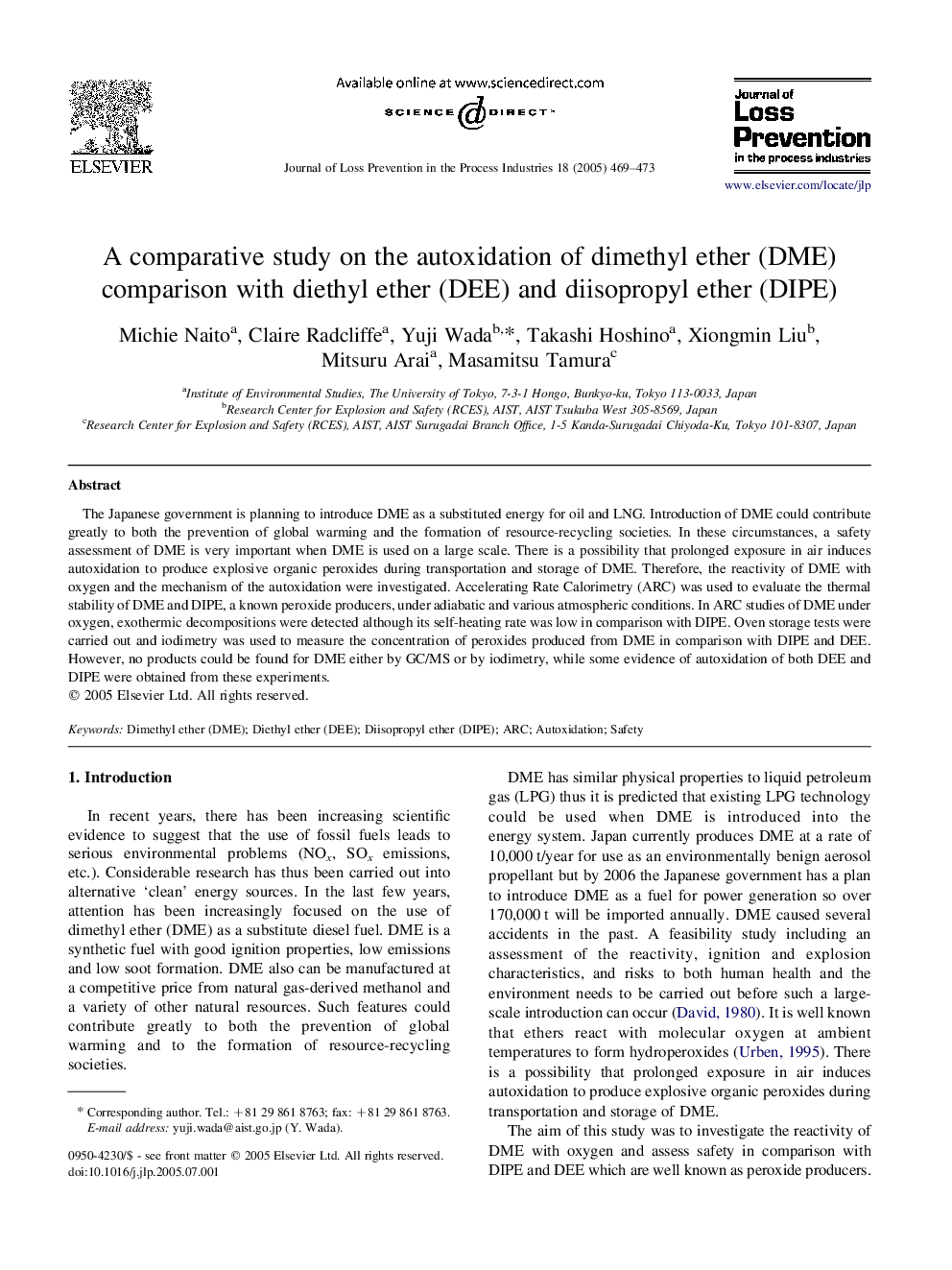| Article ID | Journal | Published Year | Pages | File Type |
|---|---|---|---|---|
| 9675130 | Journal of Loss Prevention in the Process Industries | 2005 | 5 Pages |
Abstract
The Japanese government is planning to introduce DME as a substituted energy for oil and LNG. Introduction of DME could contribute greatly to both the prevention of global warming and the formation of resource-recycling societies. In these circumstances, a safety assessment of DME is very important when DME is used on a large scale. There is a possibility that prolonged exposure in air induces autoxidation to produce explosive organic peroxides during transportation and storage of DME. Therefore, the reactivity of DME with oxygen and the mechanism of the autoxidation were investigated. Accelerating Rate Calorimetry (ARC) was used to evaluate the thermal stability of DME and DIPE, a known peroxide producers, under adiabatic and various atmospheric conditions. In ARC studies of DME under oxygen, exothermic decompositions were detected although its self-heating rate was low in comparison with DIPE. Oven storage tests were carried out and iodimetry was used to measure the concentration of peroxides produced from DME in comparison with DIPE and DEE. However, no products could be found for DME either by GC/MS or by iodimetry, while some evidence of autoxidation of both DEE and DIPE were obtained from these experiments.
Related Topics
Physical Sciences and Engineering
Chemical Engineering
Chemical Health and Safety
Authors
Michie Naito, Claire Radcliffe, Yuji Wada, Takashi Hoshino, Xiongmin Liu, Mitsuru Arai, Masamitsu Tamura,
